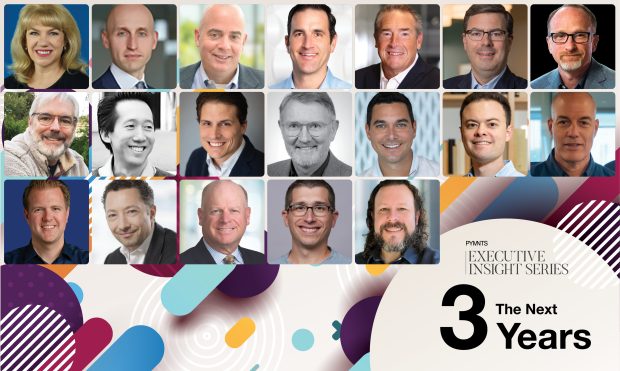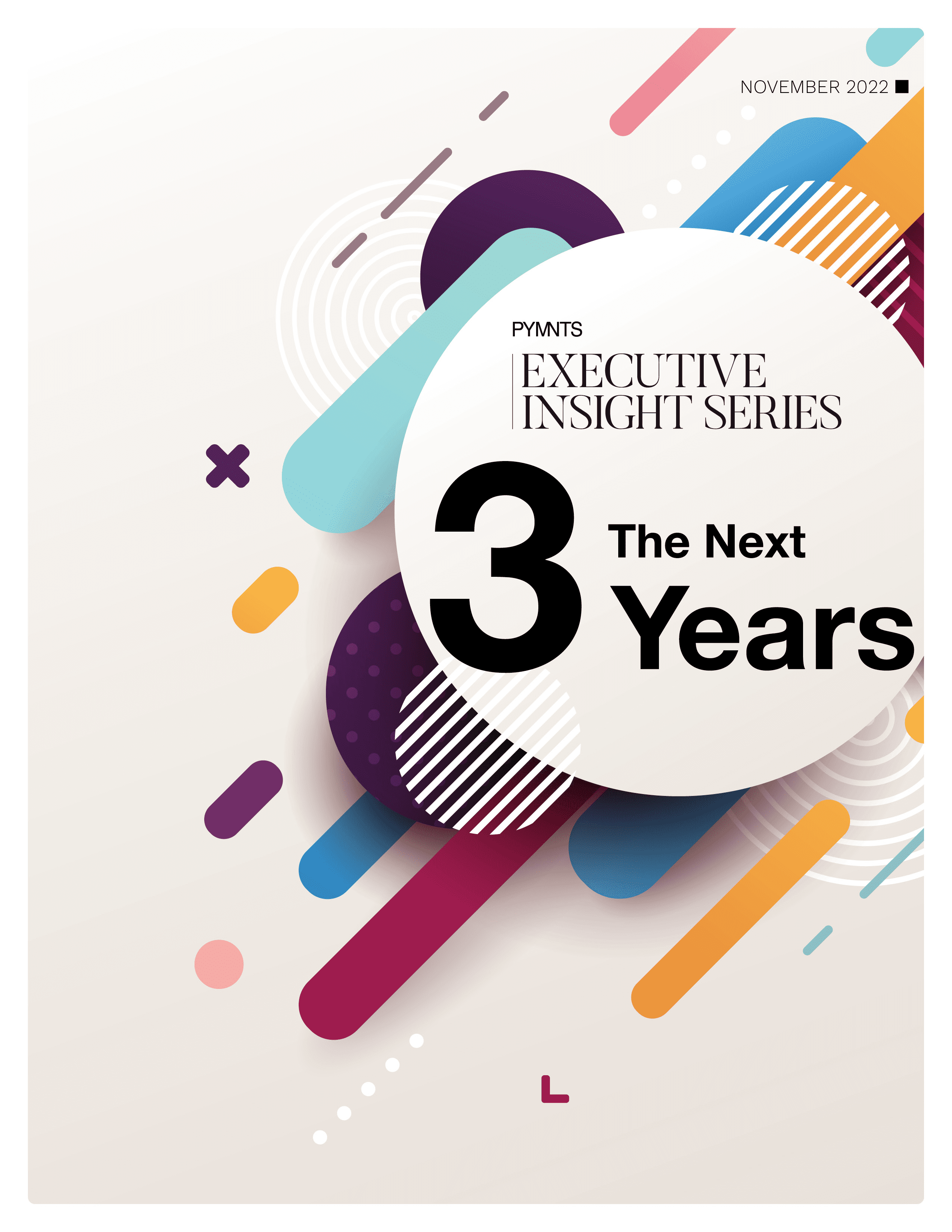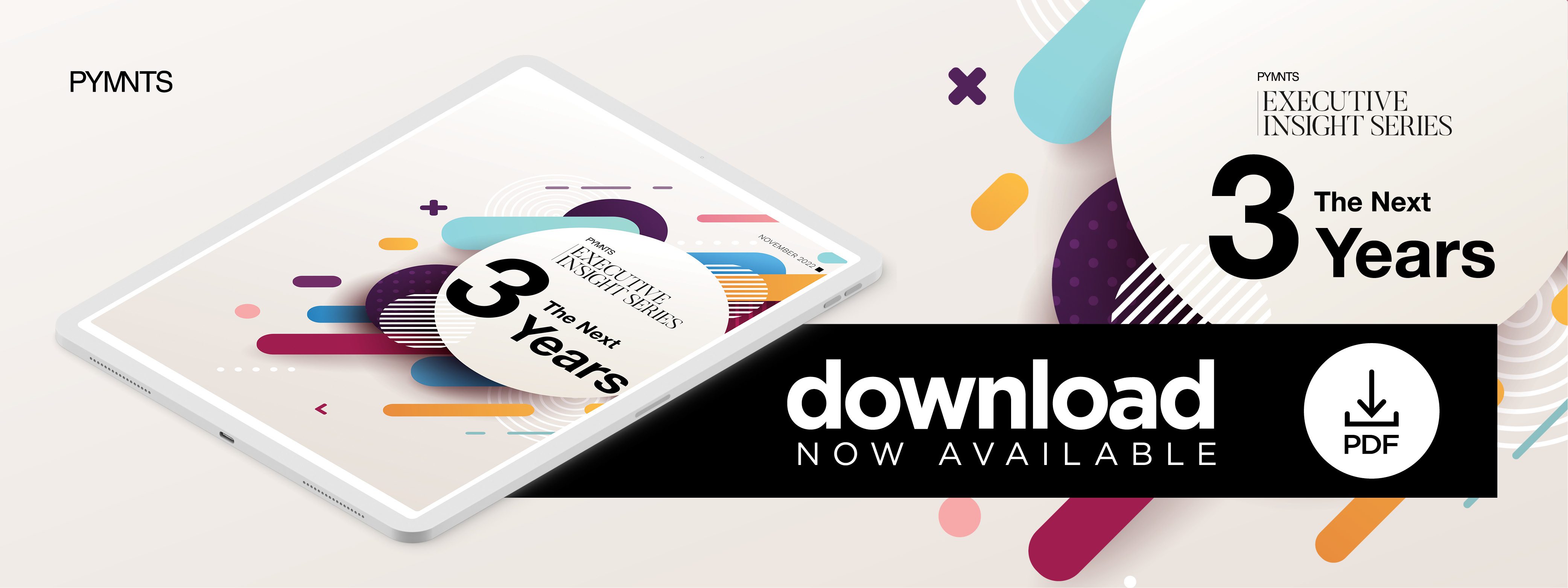19 Payments Execs Say Payments Next Three Years Is Embedded and Real Time

Looking back on 2022 is a lesson in expecting the unexpected.
COVID-19 concerns and supply chain shortages were unceremoniously pushed aside by sky-high inflation and a different kind of crisis: one that triggered months of nonstop sales events from Amazon to Walmart and everyone in between, and a great unloading of excess goods of 2021.
Against that backdrop, few foresaw the record shopping demand unleashed from Black Friday to Cyber Monday 2022 as the bargain-minded were motivated by deals.
“It goes to show you don’t ever know,” as the Grateful Dead foresightedly sang, so PYMNTS turned to a raft of experts whose gift it is to know what’s in the cards before they’re dealt.
Read their responses in our new eBook, “The Next Three Years Insight Report – December 2022.”
Looking for the recurring themes among power players, the push to real-time intensifies with what one executive called a “once-in-a-generation opportunity for new [payments] offerings” that will drastically accelerate money mobility — for good and ill.
With FedNow’s debut in sight, instant payments is the new rail that stands to unleash innumerable offspring, fulfilling the promise of true instant money — and ushering in the era of fast fraud.
Combatting that will be battalions of digital identity verification players now in a furious test-and-learn mode, already battling with cyber-foes that operate like multinationals.
As legacy gives way to the future, some old stalwarts will not go gently into that good night. The paper check will still be here in 2025, for example, but will large accounts payable (AP) teams?
Automation AP is one of the areas lined up for profound change as companies learn the efficiencies of letting application programming interface (API) algorithms handle mushrooming payment volumes that have gotten too complex for humans in many ways.
While time-traveling, many believe a crypto spring will follow the crypto winter of 2022, especially in B2B payments where digital asset exchange seems better suited. That’s as the consumerization of B2B payments rolls on, making B2B transactions easier and cheaper.
Despite the pasting Alexa took late in 2022, the Connected Economy is less like a train that can be easily derailed and more like an airline that goes everywhere, all the time. The stellar growth of at-home healthcare and health-monitoring wearables attest to its future.
Some see the emergence of a “translation layer” akin to ATM networks as helping achieve this, acting as the middleware between a multitude of payment options and their use cases.
Working capital access is undergoing major innovation: bank-issuer-FinTech linkups will seem commonplace 36 months from now. On a related note, buyer-supplier payments are already experiencing what’s possible as instruments like commercial cards level the equation.
As new disbursement paradigms arise from lessons learned during the past three years, it promises a better, faster and more secure future for money mobility without the complexity. That goes double for gig worker payouts, the exploding use cases for embedded payments everywhere and the integrations needed to bring it all to fruition.
Not completely unlike paper checks, resilient credit and debit cards aren’t going anywhere. Still, the tokenization of cards is rising fast, also ushering in the era of real-time, for real this time.
Regulations on everything from buy now pay later to crypto to RTP will increasingly govern the payments landscape as governments move to control some of the wild west vibes in finance.
Identity will become a kind of currency over the next three years as the sector improves at proving we are whom we claim to be and starts predicting our intent as consumers. That will usher in the era of hyper-personalization and a whole new consumer experience.
What activities and investments are you thinking about over the next three years that will push digital transformation forward in your industry? Perhaps the better wording would be, is there anything you’re not doing to transform payments over the next three years?

